What does it mean to live on NATO’s external border in times of geopolitical conflict? The Latvian Pavilion, one of the most captivating and relevant exhibitions at the Venice Biennale of Architecture, looks at the military defence of the Baltic state from the perspective of its border area inhabitants.
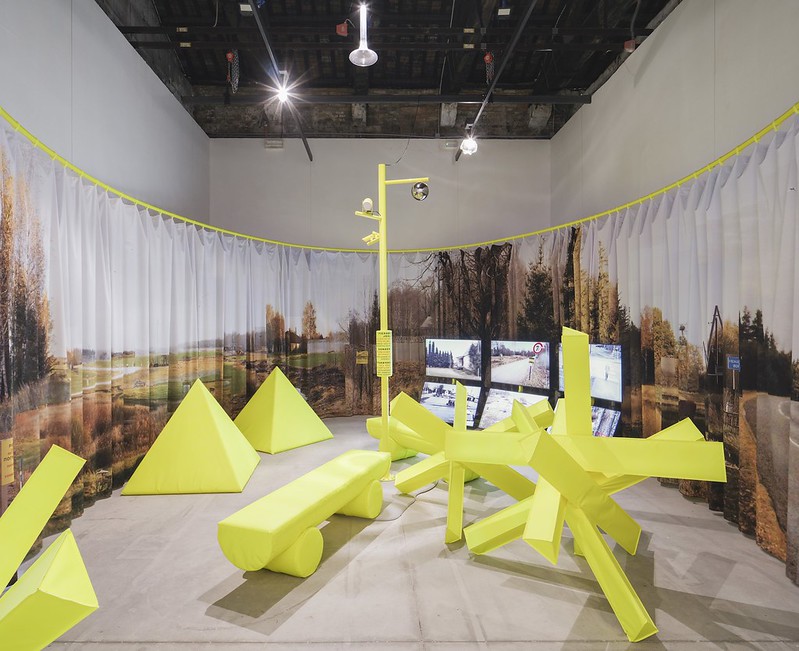
Landscape of Defence, Latvian Pavilion, Venice Architecture Biennial. Photo: Michiel De Cleene
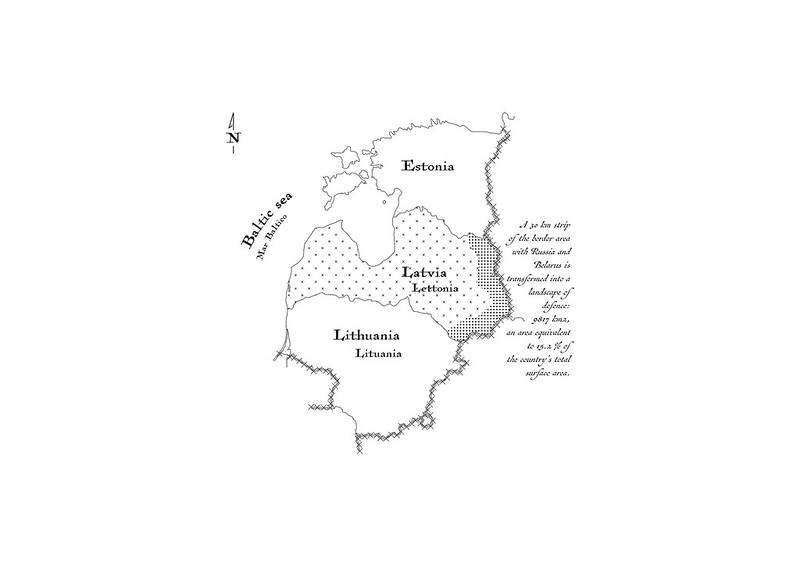
Outlines of the Baltic states, indicating the external borders of NATO and EU that are currently being fortified. The densely dotted area in the Latvian territory shows the 30 km strip that is considered the border area. In this territory most of the infrastructure of defence is deployed, thus creating this new ‘Landscape of Defence’. Image: SAMPLING e NOMAD architects
The threat of a Russian attack has prompted Latvia to protect its frontier with extensive military infrastructure, including fences, Czech hedgehogs, caltrops, motion sensors, barbed wire, early warning signs, cameras, extra guards and anti-tank trenches.
The exhibition examines the impact that this fortification apparatus has on people and the landscape. Latvia’s border militarisation is transforming around 15% of its territory. While the project focuses on the Latvian border with Russia, it also resonates with global geopolitics. As the Latvian border is also the external border of the EU and NATO, the territorial integrity of Latvia is intrinsically linked to the territorial integrity of these international unions. Curated by Liene Jākobsone and Ilka Ruby, the show invites visitors to consider the physical and psychological imprint of border fortifications across the world.
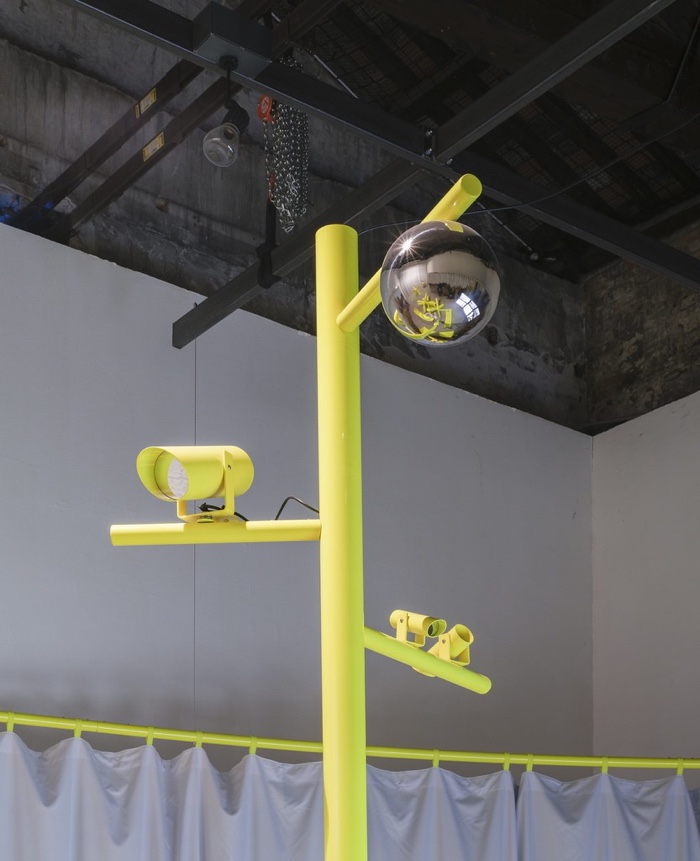
Pavilion of LATVIA, Landscape of defence. Photo: Andrea Avezzù. Courtesy: La Biennale di Venezia
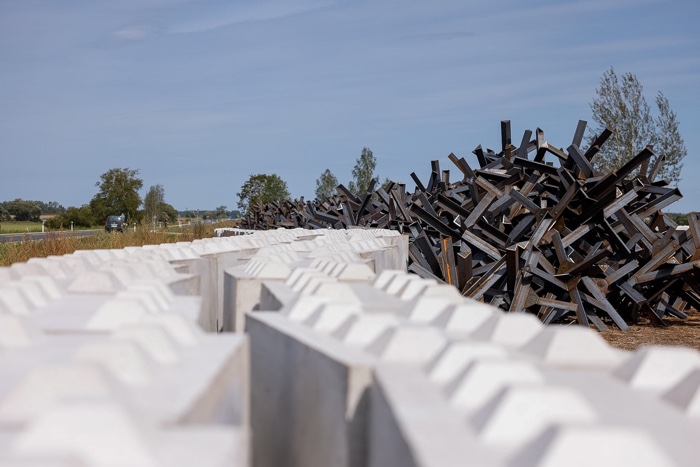
Photo: Ministry of Defence of the Republic of Latvia
The defensive infrastructure may reassure passers-by but it also reinforces anxieties about the proximity of war and conveys a message of “us” vs “them”. The exhibition features a short film in which people living in rural areas along the border share their experiences of how daily life has changed since the beginning of Russia’s invasion of Ukraine. They discuss Russian friends who stopped calling, surveillance cameras attached to trees, hunters who are pissed off because wild animals from Russia don’t cross the border to Latvia anymore, being asked by guards to turn back when they go to the forest to cut a tree for Christmas or being stopped at the border for identity control, etc. They also talk about their attachment to the democracy enjoyed by Latvia since the country gained independence from Soviet occupation in 1991.
At the centre of the exhibition, bright yellow military objects in the shape of dragon’s teeth and anti-tank hedgehogs rub shoulders with other, more mundane elements found across the border area: log benches and video surveillance devices. The walls of the pavilion are covered in a photographic collage of Latvian border landscapes.
More images and details about the Latvian Pavilion at the Venice Biennial of Architecture:
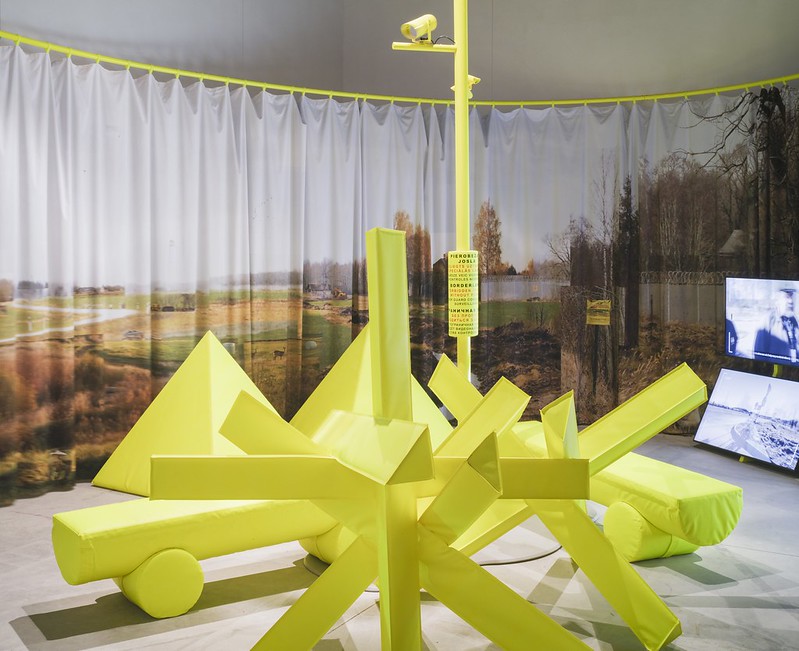
Landscape of Defence, Latvian Pavilion, Venice Architecture Biennial. Photo: Michiel De Cleene
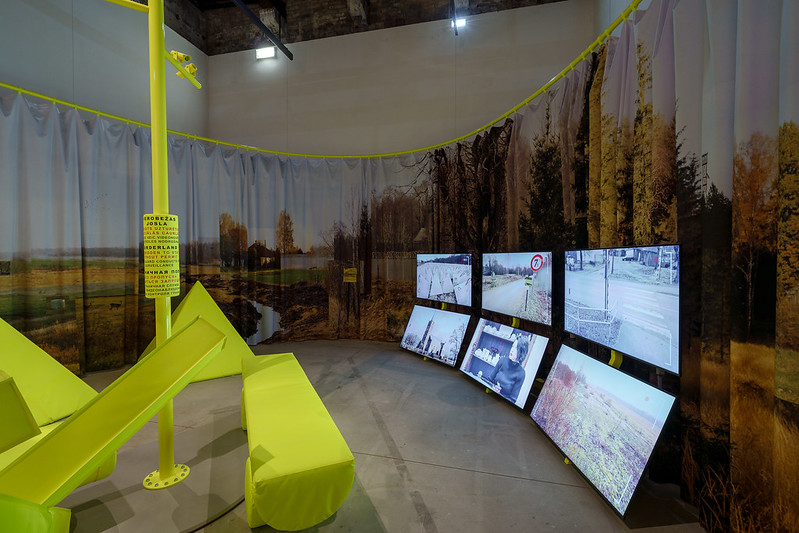
Pavilion of LATVIA, Landscape of defence. Photo: Andrea Avezzù. Courtesy: La Biennale di Venezia
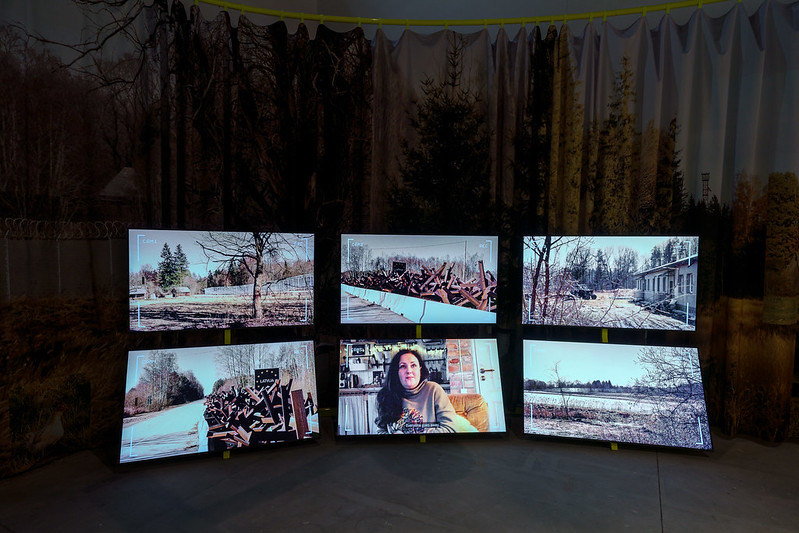
Pavilion of LATVIA, Landscape of defence. Photo: Andrea Avezzù. Courtesy: La Biennale di Venezia
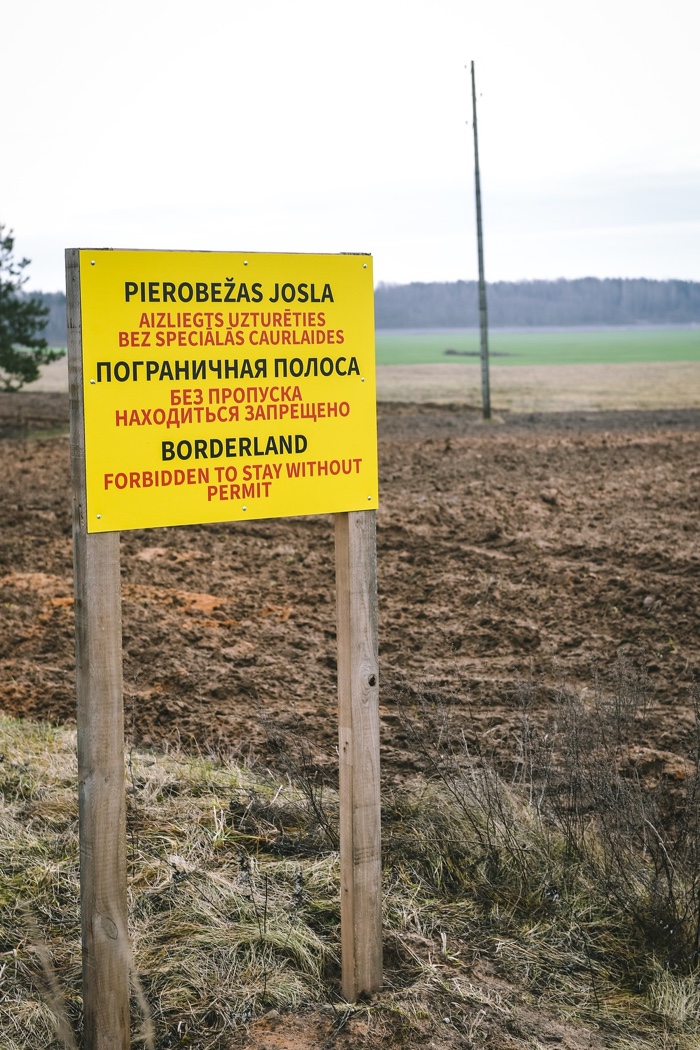
Photo: Elīna Kursīte
All along the border there is a 2 kilometre wide strip of land with restricted access. There are signs on the roads to remind people of the requirement to carry a special permit, but otherwise it remains an area on the map with no evidence of it in nature. The locals have long-term permits, while others who wish to enter the area must apply for a permit for a specific area and a specific period of time. Recently, a rotation system has been introduced for the border guards – they are transferred to regions further away from their place of origin, and the place of transfer changes periodically. Locals mention that as a result, they are sometimes stopped for document checks on their daily commute, whereas before they were never checked by the border guard, as they knew each other personally.
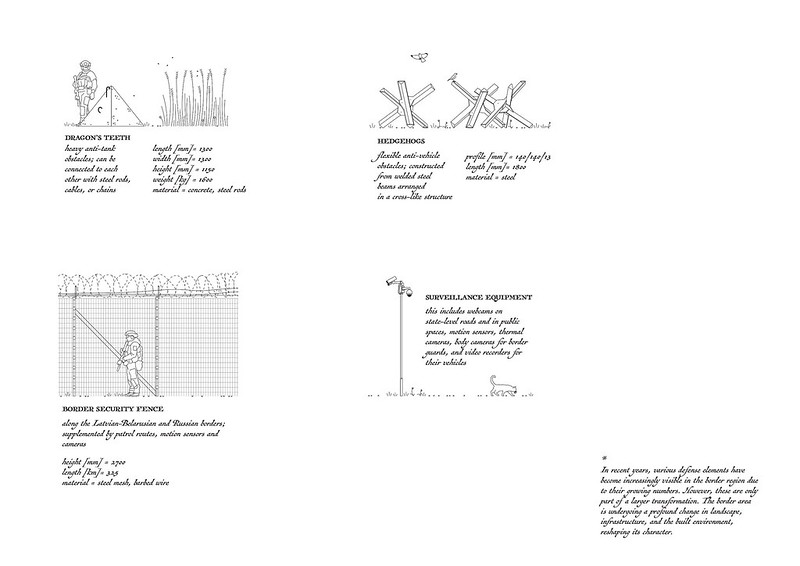
Drawings depicting the most ubiquitous and visually defining defence elements – the fence, the dragon’s teeth, the hedgehogs and the surveillance cameras. Image: SAMPLING e NOMAD architects
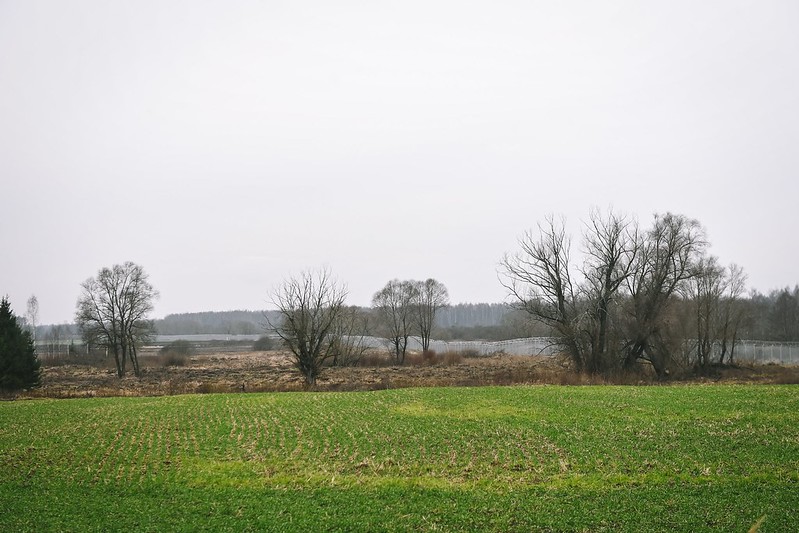
Photo: Elīna Kursīte
Latvia. Landscape of defence was curated by Liene Jākobsone and Ilka Ruby, and designed by the studios SAMPLING (Manten Devriendt, Liene Jākobsone) & NOMAD (Marija Katrīna Dambe, Florian Betat.) On view at the 19th International Architecture Exhibition. La Biennale di Venezia until 23 novembre 2025.
